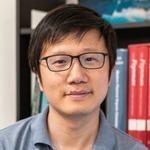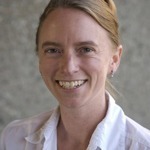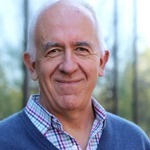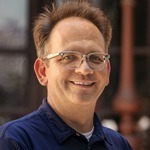Featured Speakers

Zhen Chen
Assistant Professor of Biology and Biological Engineering
Zhen Chen is currently an Assistant Professor of Biology and Biological Engineering at Caltech. He earned his PhD in biology from Rockefeller University in 2018. Zhen’s research focused on developing chemical tools to study how proteins behave in cells. Zhen later developed an imaging approach to see protein molecules inside cells at sub-molecule resolution directly. Currently, Zhen is applying this powerful imaging approach to study how stem cells differentiate into highly specialized germ cells, including sperm and oocytes. One exemplary question is how sperm grow tails to swim. This process is like putting hundreds of thousands of diverse LEGO pieces together to make a moving device, like a car or rocket. However, in the case of sperm, everything must be done at the tiny molecular scale inside the tiny cells.

Jennifer M. Jackson, PhD
William E. Leonhard Professor of Mineral Physics
Jennifer Jackson’s research group focuses on combining experimental results with geophysical methods to better understand planetary interiors. By combining a suite of spectroscopic methods, primarily at advanced radiation sources, we determine the elastic, vibrational, and chemical properties of candidate planetary materials under extreme conditions of pressure and temperature. Through collaborations with Seismo Lab colleagues, we integrate the most recent mineral physics results with seismic observations and geodynamic modeling to gain a multi-dimensional understanding of the deepest parts of Earth’s interior.

Kirby Nelson, PhD
Professor of Economics & William H. Hurt Scholar
Kirby Nielsen, PhD, is an economist with interests in experimental economics, behavioral economics, and decision theory. In her research, she uses experiments to test and inform economic theory, with a focus on individual decision-making and decisions under uncertainty. The results of her research can better inform how people make decisions in a range of areas, including financial investments and healthcare, as well as managerial decisions in the workplace. Nielsen earned her PhD in economics from Ohio State University in 2018, and served as a postdoctoral fellow in economics at Stanford University from 2018 to 2020.

Pietro Perona, PhD
Allen E. Puckett Professor of Electrical Engineering
Professor Perona’s research focusses on vision: how do we see and how can we build machines that see.
Professor Perona is currently interested visual recognition, more specifically visual categorization. He is studying how machines can learn to recognize frogs, cars, faces and trees with minimal human supervision, and how machines can learn from human experts. His project `Visipedia’ has produced two smart device apps (iNaturalist and Merlin Bird ID) that anyone can use to recognize the species of plants and animals from a photograph.
In collaboration with Professors Anderson and Dickinson, professor Perona is building vision systems and statistical techniques for measuring actions and activities in fruit flies and mice. This enables geneticists and neuroethologists to investigate the relationship between genes, brains and behavior.
Professor Perona is also interested in studying how humans perform visual tasks, such as searching and recognizing image content. One of his recent projects studies how to harness the visual ability of thousands of people on the web.

Vikram Ravi, PhD
Assistant Professor of Astronomy
Vikram’s professional focus at Caltech is on the ephemeral and unseen Universe. He uses phenomena that fluctuate on timescales between nanoseconds to years to explore physics in regimes not achievable on Earth. For example, he uses the mysterious fast radio bursts from distant galaxies to measure the large-scale structure of the Universe, and observations of pulsars in the Milky Way to detect gravitational waves from binary supermassive black holes. He is also an instrument builder, developing world-leading arrays of radio telescopes for his research.
An Australian of Indian origin, Vikram pursued physics and astronomy, to the mild bemusement of his astronomer parents. He completed his undergraduate research on active magnetic environments of nearby stars. Vikram next served as an astronomer and Junior Specialist at the University of California, Berkeley, working with Professor Charles Townes and the Infrared Spatial Interferometer group. There, his team developed instrumentation to image the distribution of molecular species and dust in the atmospheres of giant stars, and investigated into how giant hotspots on the surface of Betelgeuse aided in launching of vast clouds of dust. Vikram completed his PhD at the University of Melbourne in 2014, working with Professor Stuart Wyithe and George Hobbs, PhD. His doctoral research involved predicting gravitational-wave signals from orbiting pairs of supermassive black holes in merging galaxies. This work led to several accolades, including the Charlene Heisler thesis prize of the Astronomical Society of Australia, and the Stefano Braccini thesis prize of the Gravitational Wave International Committee.
Vikram was a Millikan Fellow in observational astronomy at Caltech and a Clay Fellow at the Center for Astrophysics, Harvard and Smithsonian. Vikram’s 2023 physics colloquium at Stanford University offers an insight into some of his current work.

Brian M. Stoltz, PhD
Victor and Elizabeth Atkins Professor of Chemistry & Investigator, Heritage Medical Research Institute
Brian was born in Philadelphia, and attended the Indiana University of Pennsylvania. He initially was interested in music and mathematics, but fell in love with organic chemistry thanks to his advisor, Professor John T. Wood, PhD. Following a year abroad working at Bayer AG in Germany and attending the Ludwig Maximilians Universität in Munich, Brian earned a dual BS in chemistry and BA in German in 1993 from IUP.
After completing his undergraduate studies, Brian enrolled at Yale University under the direction of John L. Wood. While at Yale, Brian completed the total syntheses of several indolocarbazoles including (+)-K252a and (+)-staurosporine, some of the earliest and most potent general kinase inhibitors to be discovered. After receiving his PhD in 1997, Brian moved to Harvard as an NIH postdoctoral fellow with Professor E. J. Corey, PhD, where he developed an enantioselective synthetic route to nicandrenone natural products, known as the active components of the Peruvian Shoo-fly plant.
Upon completion of his postdoctoral studies, Brian accepted a position at Caltech, where he is now the Victor and Elizabeth Atkins Professor of Chemistry and a Heritage Medical Research Institute Investigator. His research group studies the design and development of new strategies in complex molecule synthesis. Brian has been recognized extensively for his work, including being named a Fellow of the American Chemical Society in 2019, and receiving the 2018 American Chemical Society Award for Creative Work in Synthetic Organic Chemistry, the Mukaiyama Award in 2015, and the 2017 Richard P. Feynman Prize for Excellence in Teaching from Caltech.